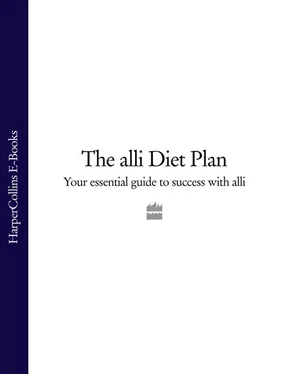2. Try to work out what role foods plays in your life – is it a comfort when you are unhappy or stressed? Do you eat when you are bored? By thinking this through you may be able to avoid falling into the trap of eating when you are not really hungry.
3. Plan your meals in advance, and make a note every day of what you ate and drank, your activity level and how you felt that day. Look back at it often to see if there are any links between your mood and what you did or ate. When you are feeling tempted to give up, focus on the good days and take strength from your previous successes.
4. Think about how you eat, and modify those things that are not helpful. For example if you tend to snack when you are preparing dinner, chop up carrot sticks in advance to munch on. If you are a habitual car-snacker, train yourself not to eat while in the car, perhaps drinking water instead. Have a proper meal time at the dining table rather than grazing while at the computer or watching TV. Developing these sorts of habits takes time but is worth the effort.
5. Be positive about yourself and what you are doing. Having a positive mental attitude can work wonders. Believe in yourself, and surround yourself with others who will support you.
6. When you are tempted, remind yourself how well you are doing, not listening to the negative voice within, and focus on the goal you have set yourself. If you do succumb to temptation, don’t give up. Just keep going, focusing again on your goal.
7. Don’t forget the psychological benefit of being active. Go for a 10-minute brisk walk rather than 10 minutes of munchies. Enlist family and friends to exercise with you, and make this a regular event.
8. Talk positively to people – including yourself – about what you are doing. This will help strengthen your willpower and remind you of the benefits of your diet rather than feeling it is all about giving up things.
In this chapter you will find a range of different menu plans to help guide you through and beyond the time you are dieting. There are menu plans to fit the different calorie and fat bands of your diet. Included here are four weeks of daily menus for the 1400-calorie diet, the one that is most commonly followed. Additionally there is one menu plan per week for each of the 1200-, 1600- and 1800-calorie diets. These plans may also be useful if you are just starting out on the diet, or are coming to the end of your diet and want to maintain weight rather than lose it.
The menu plans can be used in several ways. When dieting, some people like to know exactly what they can eat down to the last lettuce leaf. If you are one of those people the menu plans are perfect, as they describe each meal and snack. They provide links to the recipes in Chapter 4 (the recipe name is in italics ). If there is a meal you don’t fancy, you can find a substitute by looking at Chapter 4, by searching for a ready-prepared option in Chapter 6 or by putting ingredients from Chapter 9 together.
Other people use menu plans for inspiration, gleaning ideas for meals but making up their own menus. If this is the way you like to diet, then you can easily find information to suit your calorie and fat targets by using chapters 4, 6 and 9. It is worth writing down your own menu plan so you can check that you keep within your fat and calorie targets.
A Reminder of the Fat and Calorie Targets
The table that follows shows you the maximum number of calories and grams of fat you can eat. The menu plans are worked out on a daily basis, so use the information in the first two columns. If you are making up your own meal plans, you will need to ensure that you keep to the fat targets for each meal or snack.
The table below suggests how you may break your daily fat and calorie allowance down.

• Each day you should have 300ml skimmed milk (or non dairy equivalent) for cereals, drinks and in cooking. (This helps ensure you are having adequate calcium.) Measure it out at the start of the day, so you know how much you are using.
• Drink at least 1.5 litres (6 x250ml glasses) of water a day in addition to other drinks. You may have low calorie squashes and unsweetened herb or fruit teas in addition to tea and coffee, but do not forget to count in sugar or milk you are adding.
• Drinks such as juices, smoothies and alcoholic drinks all add calories so unless stated are not included in the menu plans.
• Make sure you measure everything out. The menu plans give weights and, where appropriate, household measures.
• Recipes from the book are shown in italic text. If you don’t like the recipe, simply find another with similar fat and calories by looking at the charts at the end of Chapter 4, by choosing a ready made option from one of the supermarkets or by using Chapter 9 to construct your own meal.
| 1400-calorie Diet |
1400kcal, 48g fat per day |
|
Week 1 |
| Breakfast |
50g extra-fruit muesli; 125g low-fat fruit yogurt. |
| Mid-morning |
1 medium banana. |
| Midday meal |
1 (64g) wholemeal wrap; 2 tsp (10g) olive spread, 35g honey-roast salmon flakes, sliced cucumber; 1 apple. |
| Afternoon |
Glass of milk from daily allowance. |
| Evening meal |
1 portion Fresh Pea and Ham Risotto ; salad of watercress and 4 cherry tomatoes; Oranges with Fresh Dates and Honey Yogurt . |
| Nutrition |
1400kcal, 32g fat and 5 portions of fruit and vegetables. |
| Breakfast |
1 piece Spelt and Walnut Scone Round ; 30g medium-fat soft cheese; 200ml glass orange juice. |
| Mid-morning |
1 digestive biscuit. |
| Midday meal |
1 portion Watercress Soup with 25g grated reduced-fat cheddar; granary roll thinly spread with 1 tsp (5g) polyunsaturated spread and 1 slice lean ham; 1 medium pear. |
| Afternoon |
80g grapes. |
| Evening meal |
Hot Garlicky King Prawn Salad ; 1 pot crème caramel with 100g strawberries topped with 1tbsp (30g) Greek yogurt. |
| Nutrition |
1378kcal, 42g fat and 5 portions of fruit and vegetables. |
Week 1
| Breakfast |
1 boiled egg; 2 slices wholemeal toast with 2 tsp (10g) olive spread; 150g melon cubes. |
| Mid-morning |
Glass of milk from daily allowance. |
| Midday meal |
Subway 6-inch Sub Steak and cheese; 250ml pressed apple juice. |
| Afternoon |
40g carrot sticks with 2 breadsticks. |
| Evening meal |
1 portion Home-made Burgers with Spicy Potato Wedges with 1 portion Raspberry Salsa ; 50g salad leaves; large slice (100g) fresh pineapple. |
| Nutrition |
1400kcal, 38.5g fat and 5 portions of fruit and vegetables. |
| Breakfast |
30g branflakes with 3 chopped walnut halves and 30g (1 tbsp) sultanas; skimmed milk from daily allowance. |
| Mid-morning |
150g carton low-fat fruit yogurt. |
| Midday meal |
300ml Carrot and coriander soup (e.g. M&S); ciabatta roll (70g) spread with 2 tsp olive spread (10g); 25g premium ham; 1 apple. |
| Afternoon |
200ml pressed unsweetened apple juice. |
| Evening meal |
1 portion Spicy Lamb with 40g (dry weight) basmati rice; 50g plain naan bread; Raita made with 25g grated cucumber and 1 tbsp (35g) low-fat yogurt, black pepper. |
| Nutrition |
1416kcal, 37.4g fat and 5 portions of fruit and vegetables. |
Читать дальше













